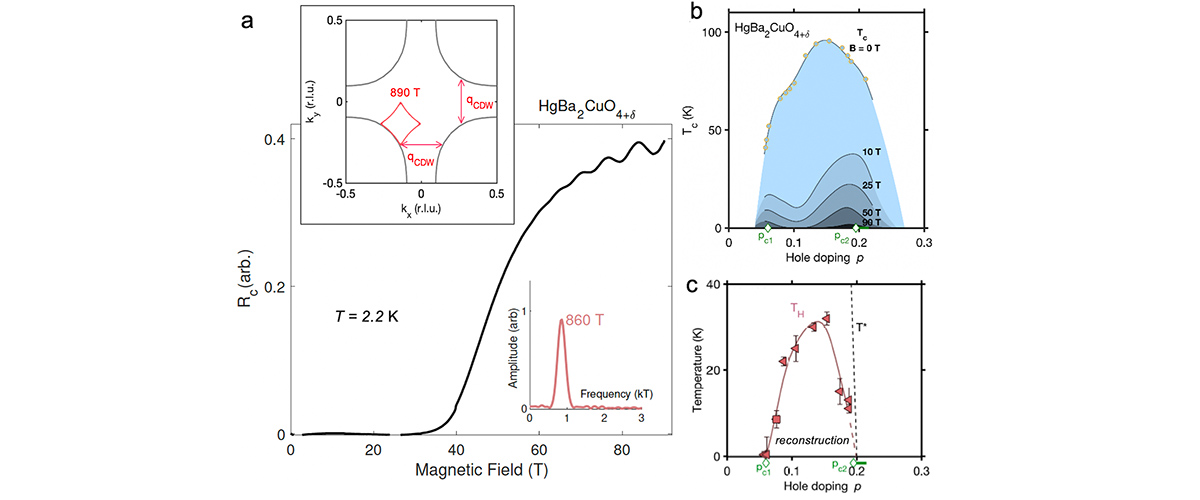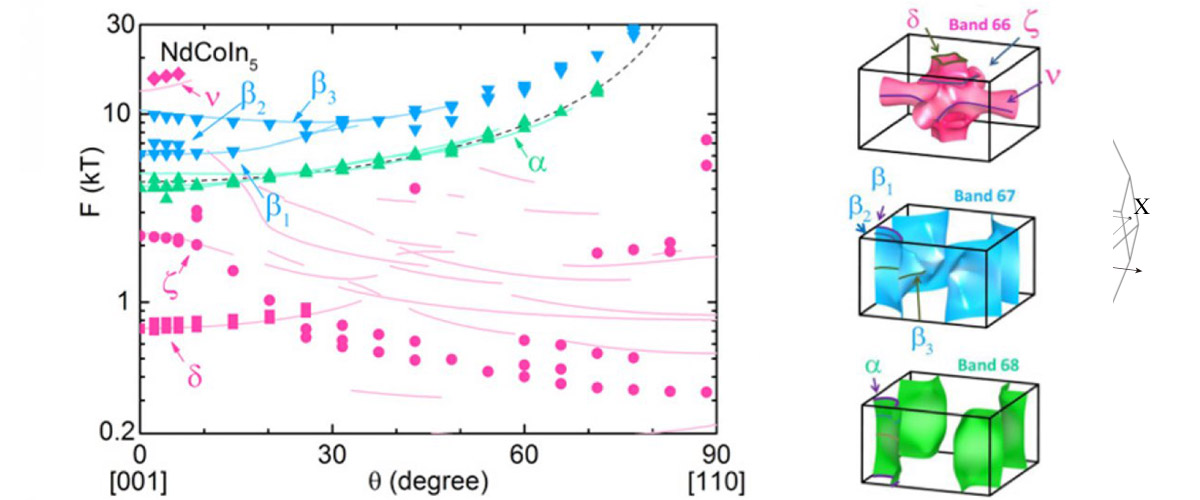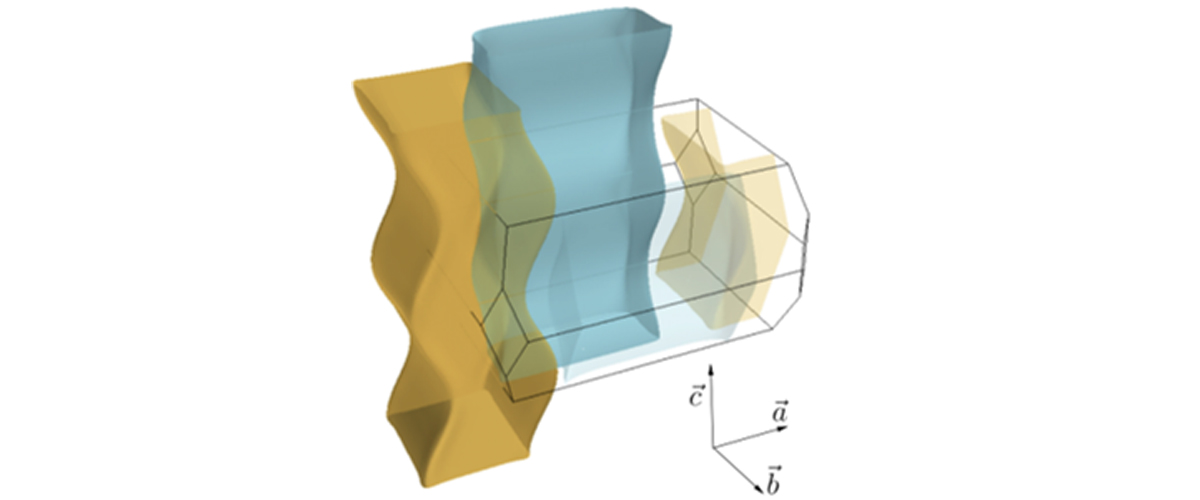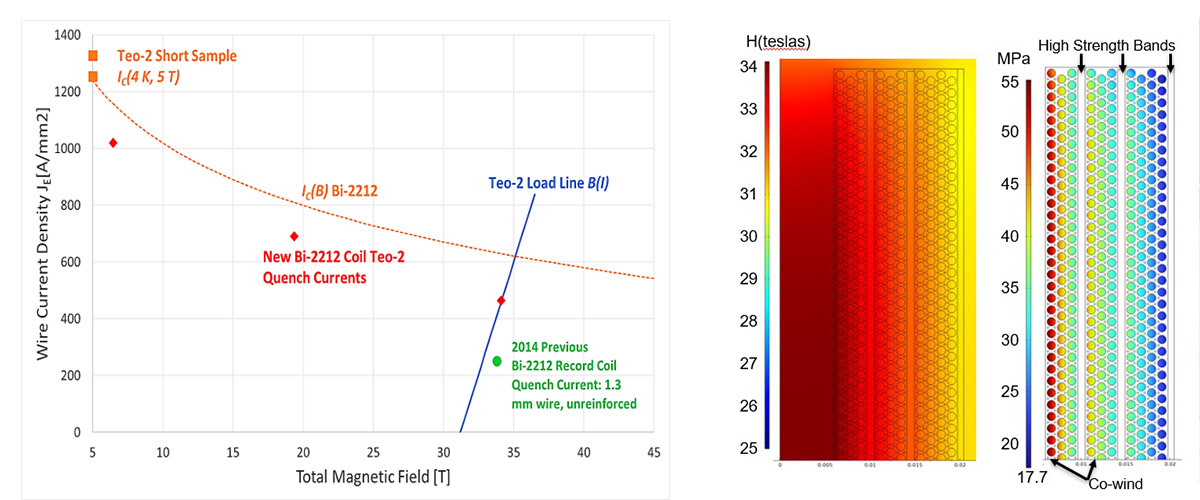What did scientists discover?
A study of the high-temperature superconductor HgBa2CuO4+? revealed signatures of a charge-density-wave phase comprised of spatial modulations of the electron charge. Ninety tesla experiments connected this phase to superconductivity by revealing two zero-temperature phase transitions where superconductivity is most robust.
Why is this important?
Superconductivity describes the ability of some materials to conduct electrical current without any loss of energy at low temperatures. More than thirty years after its discovery, there is no comprehensive theory of high-temperature superconductivity in the cuprates. One leading theoretical paradigm ascribes superconductivity to a zero-temperature phase transition, termed a quantum critical point, that is "hidden" by the strong superconducting phase. These experiments provide support for the idea of quantum criticality underlying superconductivity in the cuprates.
Who did the research?
M. K. Chan1, R. D. McDonald1, B. J. Ramshaw2, J. B. Betts1, A. Shekhter3, E. D. Bauer4, N. Harrison5
1NHMFL, Los Alamos National Laboratory; 2Cornell University; 3NHMFL, Tallahassee; 4MPA-Q, Los Alamos National Laboratory.
Why did they need the MagLab?
These conclusions would not be accessible without the reliable and repeated provision of extremely intense (>90T) pulsed magnetic fields that are required to suppress superconductivity in this cuprate. The unique 1.43GW generator at Los Alamos has delivered electrical pulses that reliably generate the largest non-destructive magnetic fields in the world, having delivered hundreds of pulses between 90T and 100T.
Details for scientists
- View or download the expert-level Science Highlight, Ninety teslas peek under the superconducting dome of a high-temperature superconductor
- Read the full-length publication Extent of Fermi-surface reconstruction in the high-temperature superconductor HgBa2CuO4+δ, in Proceedings of the National Academy of Sciences of the USA (PNAS).
Funding
This research was funded by the following grants: G.S. Boebinger (NSF DMR-1644779); N. Harrison (DOE-BES, Science of 100 T)
For more information, contact Mun Keat Chan.






